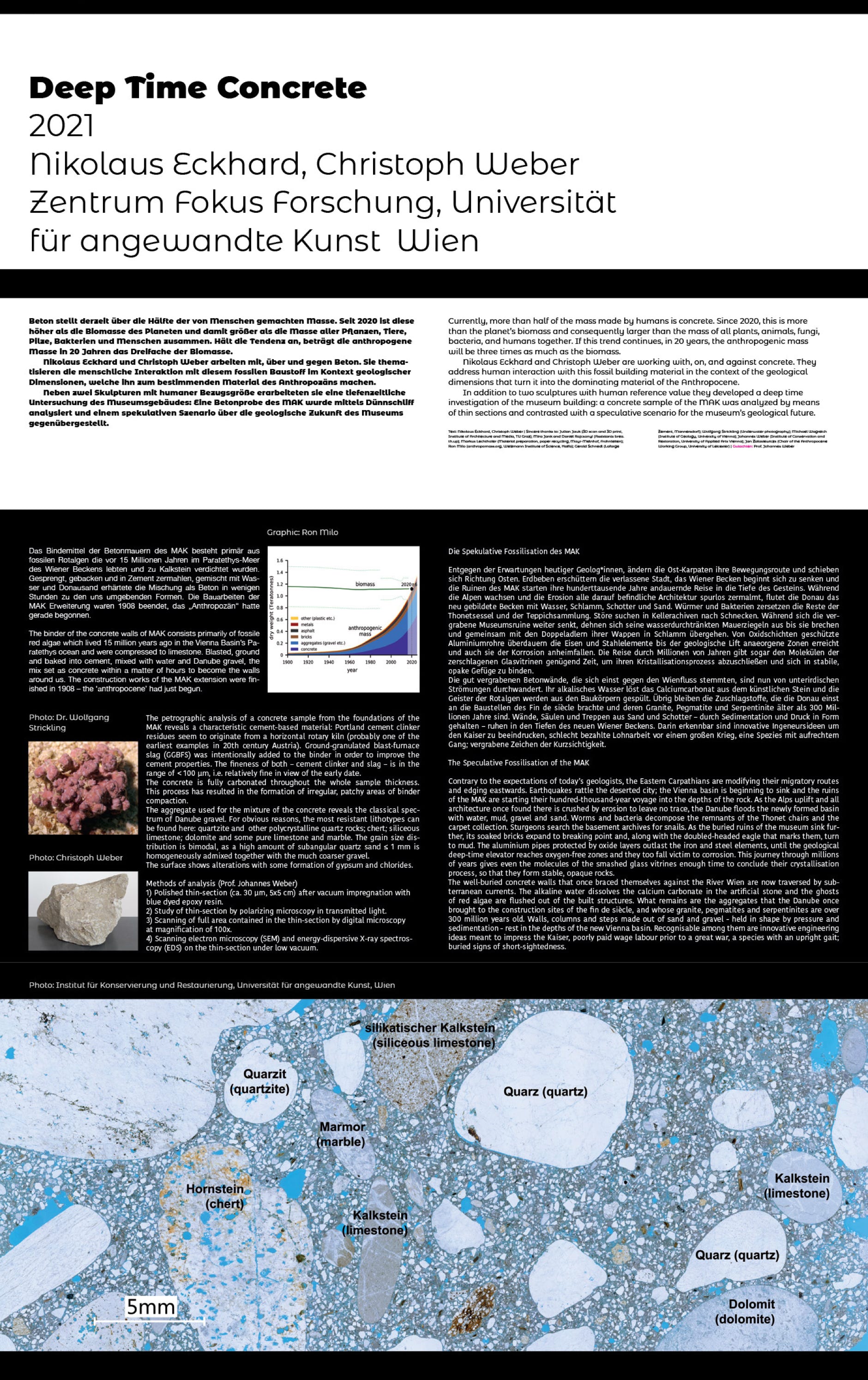Currently, more than half of the mass made by humans is concrete. Since 2020, this is more than the planet’s biomass and consequently larger than the mass of all plants, animals, fungi, bacteria, and humans together. If this trend continues, in 20 years, the anthropogenic mass will be three times as much as the biomass.
Christoph Weber is working with, on, and against concrete. Together with Nikolaus Eckhard he develops artistic research projects to address human interaction with this fossil building material in the context of the geological dimensions that turn it into the dominating material of the Anthropocene.
In addition to two sculptures with human reference value they developed a deep time investigation of the museum building: a concrete sample of the MAK was analyzed by means of thin sections and contrasted with a speculative scenario for the museum’s geological future.
Christoph Weber
Archiving the Redundant Information, 2021
Paper-pulp from recycled paper with clay and limestone powder
3d-print of a 3d-scan of a 15 mio years old, recently blasted limestone from the cement industry

Christoph Weber
Untitled (Holz bricht Beton), 2021
Beton, Holz
Nikolaus Eckhard
brea.th.up, 2021
Beton, Stahl, Kupferrohr
Vitrine: Nikolaus Eckhard, Geschiebe in Form gehalten, 2021; Christoph Weber, Archiving the Redundant Information, 2021
Sincere thanks to: Julian Jauk (3D scan and 3D print, Institute of Architecture and Media, TU Graz); Mira Jank and Daniel Rajcsanyi (Assistants brea.th.up); Markus Lechthaler (Material preparation, paper recycling, Mayr-Melnhof, Frohnleiten); Ron Milo (anthropomass.org, Weizmann Institute of Science, Haifa); Gerold Schnedl (Lafarge Zement, Mannersdorf); Wolfgang Strickling (Underwater photography); Michael Wagreich (Institute of Geology, University of Vienna); Johannes Weber (Institute of Conservation and Restoration, University of Applied Arts Vienna); Jan Zalasiewiczs (Chair of the Anthropocene Working Group, University of Leicester) | Gutachten: Prof. Johannes Weber




